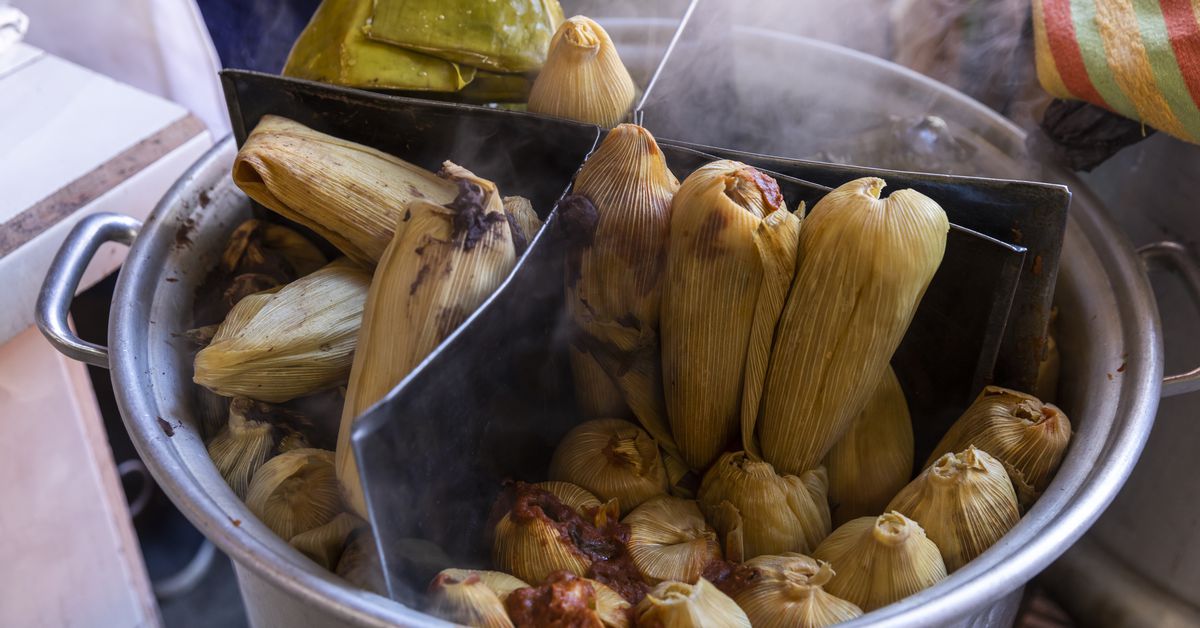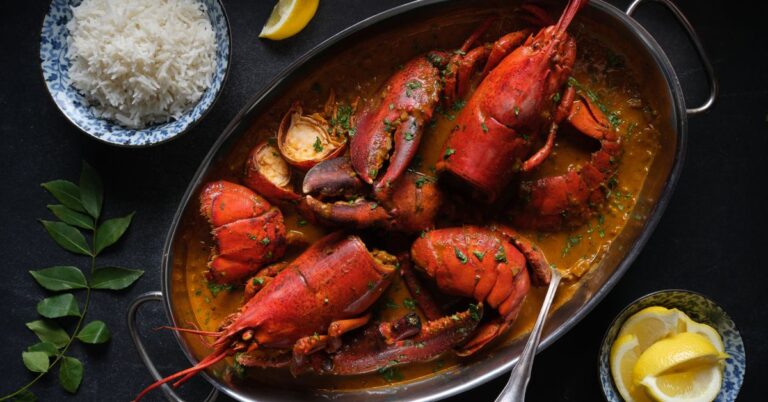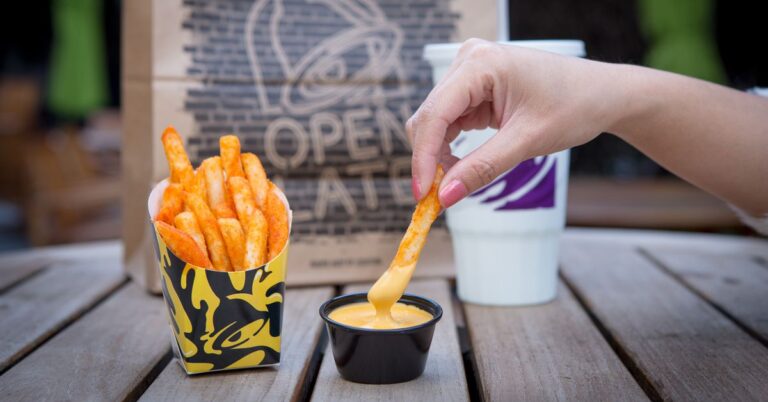8 Best Styles of Tamales to Try in Oaxaca, Mexico
fcoMy love for tamales, and connection to their innumerable forms, is very personal. As a Chicano growing up in the Central Valley of California, my holiday table always included my grandmother’s perfectly moist, spicy tamales, and they’ve remained a benchmark for me as a food writer covering Latin America. I’ve tried pamonhas (sweet corn steamed in a fresh corn husk) in Brazil, enjoyed a variety of tamales in all of Mexico’s 32 regions, squirted ketchup on tamales cubanos in Havana, had a breakfast of paches (potato tamales) at a roadside stand in Quetzaltenango.
My ongoing fascination beyond my grandmother’s vaporera (steamer pot) has been expanded by frequent visits to Oaxaca — if Oaxaca were a nation unto itself, its vast repertory of tamales would leave Mexico steaming with envy. At Doña Bonfilia’s home in Collantes, an afromexicano town in Costa Chica, she recently served me a wonderful tamal de mole steamed in banana leaves, which bridged the ultra-moist southern tamal masa with a spicy mole that reminds me of the tamales I love in northern Mexico. It’s not something I expected to find in Oaxaca, and that moment of surprise and appreciation crystallized for me: Tamales are our edible histories wrapped in the fruit of human innovation, made by queens.
Tamales are Mesoamerica’s first masa dish and an important cultural food for Mexicans. The dish is made from nixtamalized or fresh corn filled with meats, seafood, vegetables, fruit, and insects, many in stews of flavorful, local chiles, which are then wrapped in a variety of leaves — banana, dried (totomoxtle) and green corn husk, de milpa (green corn stalks), de papatla, hierba santa, and more — all steamed in a pot. There are 370 registered tamales in Mexico according to a report by the National Council of Culture and Arts (Conaculta). Yet most reports claim over 500 tamales in the republic; some communities use green plantain, mextlapiques (fish roasted in corn husk), yucca, and rice flour in more uncommon tamale recipes. And an abundance of these unique approaches can be found in the eight regions of Oaxaca, a vivid diversity formed from its 16 indigenous groups and robust community of afromexicanos.
Oaxacans eat tamales at weddings, at calendas, on Dia de Los Muertos, countless religious and indigenous holidays, Christmas, and in the everyday — they’re sold at street carts, and from homes in the pueblos. The state’s most famous tamal, tamal de mole negro, routinely announced from bicycle horn speakers in CDMX on a recording loop, “ya llegaron sus ricos tamales oaxaqueños…” sends chilangos sprinting out of their doors for a taste of Oaxaca. But this merely scratches the surface of Mexico’s most regionally diverse states, and tamal capitals, where each region reflects the many distinct cultures preserving their heritage in moist parcels of steamed masa. Here are eight versions of this iconic dish to celebrate the many Oaxacas, as we unwrap the range and flavors of tamales oaxaqueños.
:no_upscale()/cdn.vox-cdn.com/uploads/chorus_asset/file/23216774/mussels_tamales.jpeg)
Juan de Dios Garza Vela/Eater
Costa
Afromexicanos pull up mussels, called tichindas, from the roots of mangroves in lagoons of Chacahua and Manialtepec to cook in moles with bean powder and stuff in their beloved tamales de tichinda, steamed in dried corn husks. Sold in the Mercado Benito Juárez in Puerto Escondido and in afromexicano coastal towns like Collantes, Rio Grande, and Chacahua, these luxurious seafood tamales are made by blending masa with a spicy adobo, then adding mussels in their shells to this mixture. As the mussels cook, they open up and punch through the soft, flaky tamal. They’re a seafood lover’s dream. Tamales de tichinda are the quintessential afromexicano dish, and you haven’t been to the Costa Chica if you haven’t eaten a dozen of these.
Sierra Norte
Zapotecos in this part of Oaxaca are known as “la gente de las nubes,” or people of the clouds, named for the fog that settles over these mountainous towns and people. Here, the regional flat, rectangular tamales de frijol (bean tamales) serve as utensils for eating caldo seco de res, a regional beef jerky soup made with high-quality rib-eye steak. A popular method is to cover a medium-sized rectangular table with a sheet of plastic, then spread a thin layer of masa that’s next covered with black bean paste herbed with avocado leaves. The plastic is used to roll the tamal, creating several layers of beans and masa that are cut into tamales with a string along the width. Each tamal is pressed with a whole avocado leaf, and steamed in banana leaves — the finished product is served with soup for Zapoteco cultural events. Pieces of the tamal are torn off to scoop up sips of soup or simply to dip in the broth before eating.
:no_upscale()/cdn.vox-cdn.com/uploads/chorus_asset/file/23217106/LATECA220128_0017.jpg)
Valles Centrales
There are many popular tamales in Oaxaca’s most tourist-filled region: salsa verde de pollo, chicken in a sauce of chiles serranos, tomatillos, scented with pungent epazote; mole coloradito thickened with sweet plantains. But the best known is likely the honored mole negro, a global hit known all over Mexico as the tamal oaxaqueño. You’ll find the tamal de mole negro in markets, sold by street vendors serving from baskets covered in towels, or from beverage coolers loaded onto cargo bikes. Made with several chiles including chilhuacle negro, chilhuacle rojo, chile pasilla, and chile mulato together with close to 30 fried and toasted ingredients in all — fruits, seeds, herbs, spices, and more — this complex, laborious mole with chicken packed in tender masa is divine.
Papaloapan
In the zone of the mazatecos, the highlands of Papaloapan, yucca is a staple for tortillas de yuca, fried yucca, yuca al mojo (cooked in a garlicky marinade brought over by Cuban immigrants working in the region’s tobacco industry), and tamales de yuca, all essential dishes during Semana Santa. For the tamales, raw yucca is grated, strained, and passed through a mill to remove fiber and formed into a sticky, dense masa. It’s then filled with pork in a red salsa of tomatoes, chiles guajillos, other dried red chiles, and aromatics — spearmint, spices, and a whole acuyo (Mexican pepperleaf) leaf. Yucca is also used in a sweet tamal de yuca with honey, both steamed in hojas de papatla.
Sierra Sur
Sweet tamales are a staple in Mexico during Christmas, and for zapotecos in the Sierra Sur, the most common version is tamales de támala, a sweet tamal of squash, bean puree, and sugar. Calabaza támala, a local cylindrical squash with white skin and orange flesh is steamed, and strained, then run through a mill along with nixtamalized corn, and sweetened with sugar. The orange masa is filled with black bean puree and steamed in totomoxtle during the holidays; their flavor is reminiscent of the Mexican candied squash sold in markets, bakeries, and convenience stores beloved by all in Mexico.
:no_upscale()/cdn.vox-cdn.com/uploads/chorus_asset/file/23216795/20200926_120943.jpg)
La Cañada
In towns like Santa María Puxmetacán, traditional Mixe cooks will mesmerize you with their efficient, unusual process of making tamales de pescado (fish tamal): It usually involves slapping fresh masa flat like a tortilla, folding, and crimping it into an empanada, filling it with barbecued river fish and amarillo (thick yellow chile sauce), then wrapping the sealed “masa empanada” with hojas de tamal, a local plant. The thin wall of masa gives the full spotlight to the humble, smoky stew of barbecued fish in fruity chile guajillo sauce. Recipes and techniques for tamal de pescado are passed down to family members via oral traditions, and making them is reserved for special occasions in the Mixe culture.
Istmo
You can only try this tamal de iguana prepared by zapotecos in Juchitán during Semana Santa (Holy Week), where annually, five thousand black and green iguanas are harvested to make these special tamales. The event is supervised by the region’s government to sustainably maintain the ancestral practice (iguanas are a protected species in Mexico). Pre-cooked iguana meat, which tastes like a gamey foul, is set on a circle of masa amply covered in earthy green pumpkin seed mole herbed with pungent epazote, or dried red chiles brightened with achiote paste — and sometimes, too, with iguana eggs. Regardless of the mole type, it’s steamed in banana leaves.
Mixteca
The mixtecos of Huajuapan de León have a local version of a rice flour tamal, called tamales canarios, which are one of the prominent tamales for the indigenos group’s Día de La Candelaria, a Catholic holiday that involves offering tamales to honored guests. The person who finds the figurine of a baby in their Rosca de Reyes (King’s Day bread) on Día de Los Reyes Magos is the one who hosts this party. The yellow masa is a sweet blend of rice flour, butter, egg custard, egg yolks, nuts, and sugar, steamed in dried corn husks, and enjoyed as a rich dessert during this religious celebration.
Bill Esparza is a James Beard Award-winning writer and author of LA Mexicano, covering Latino food and culture.







